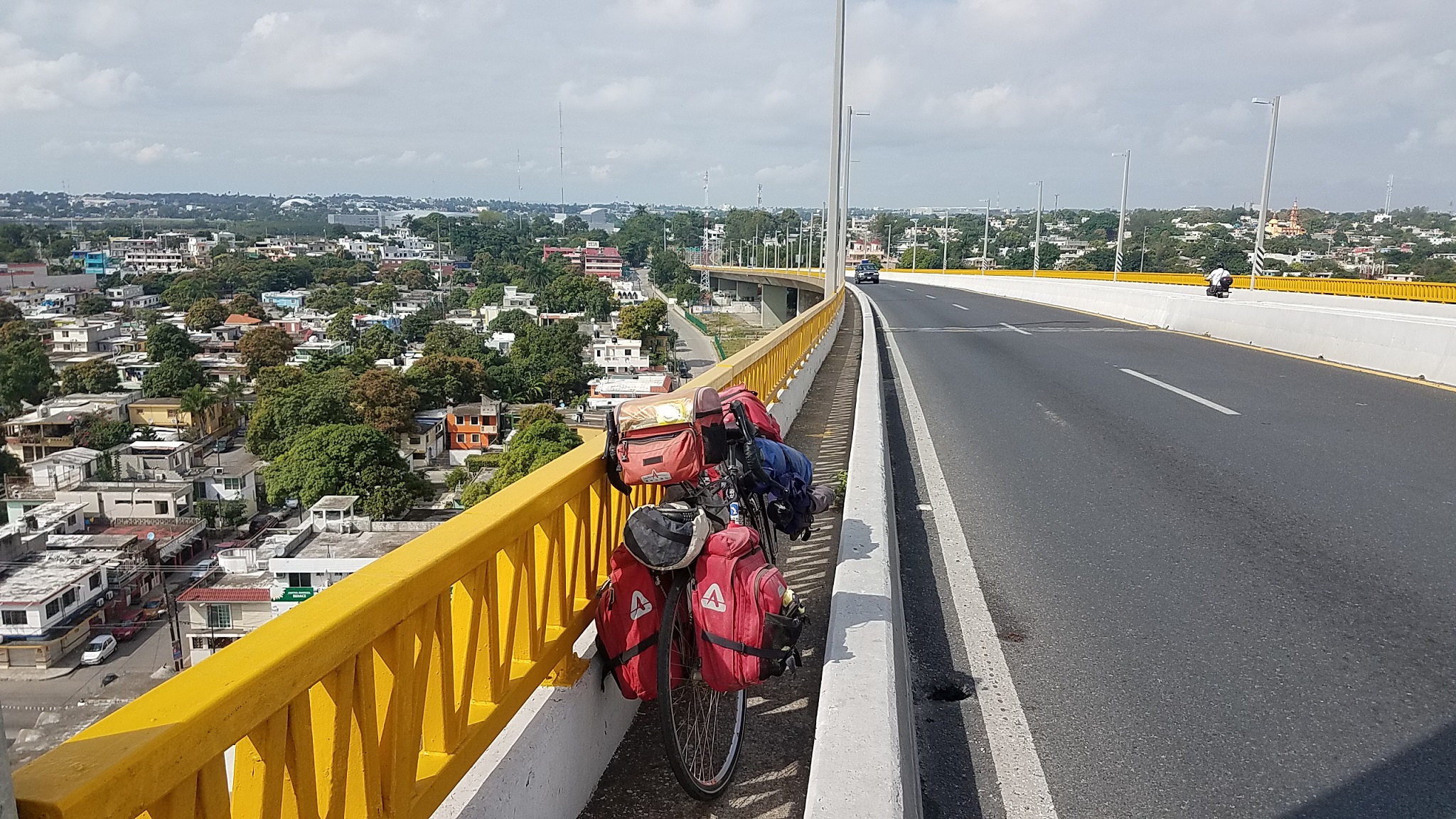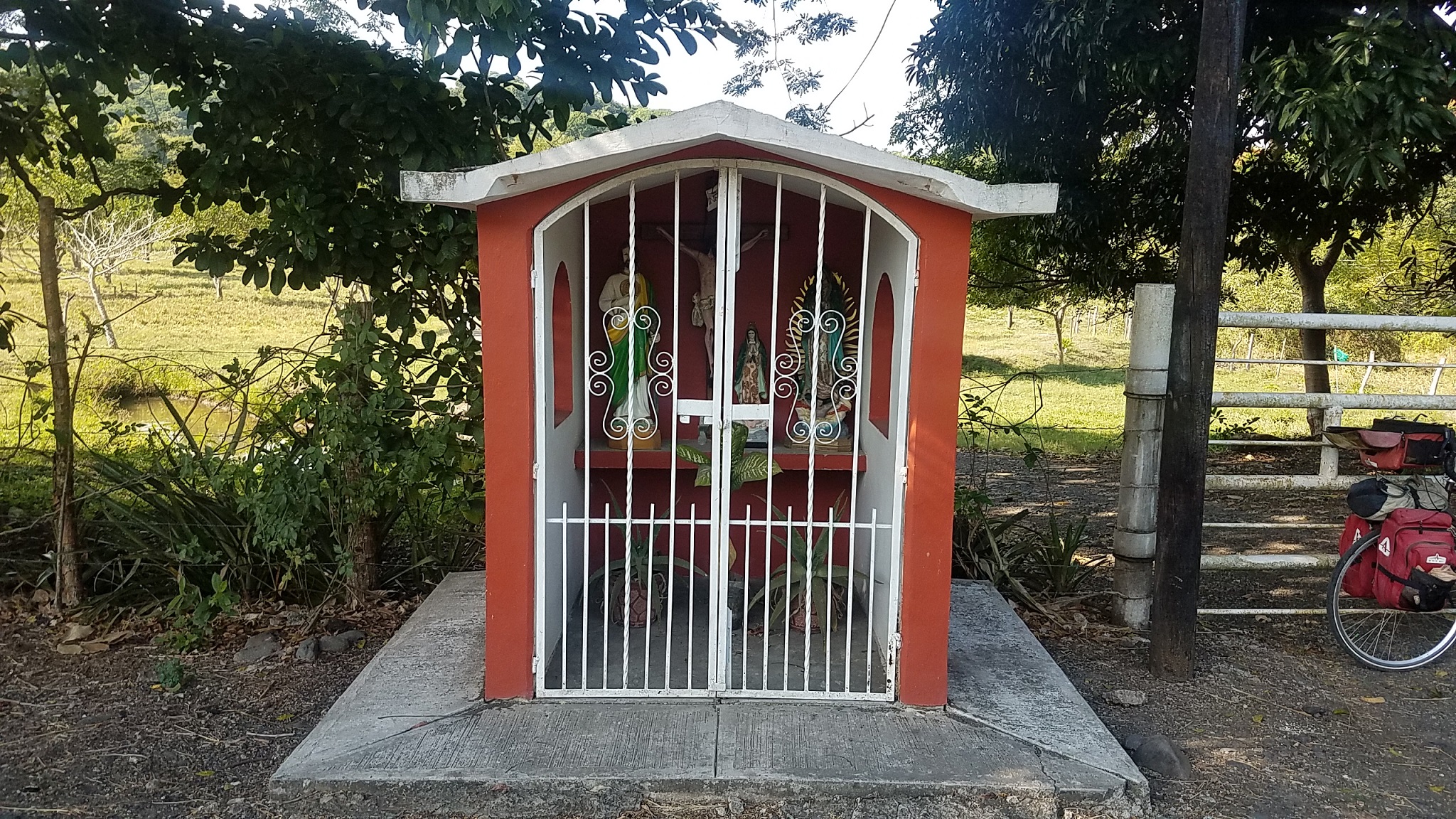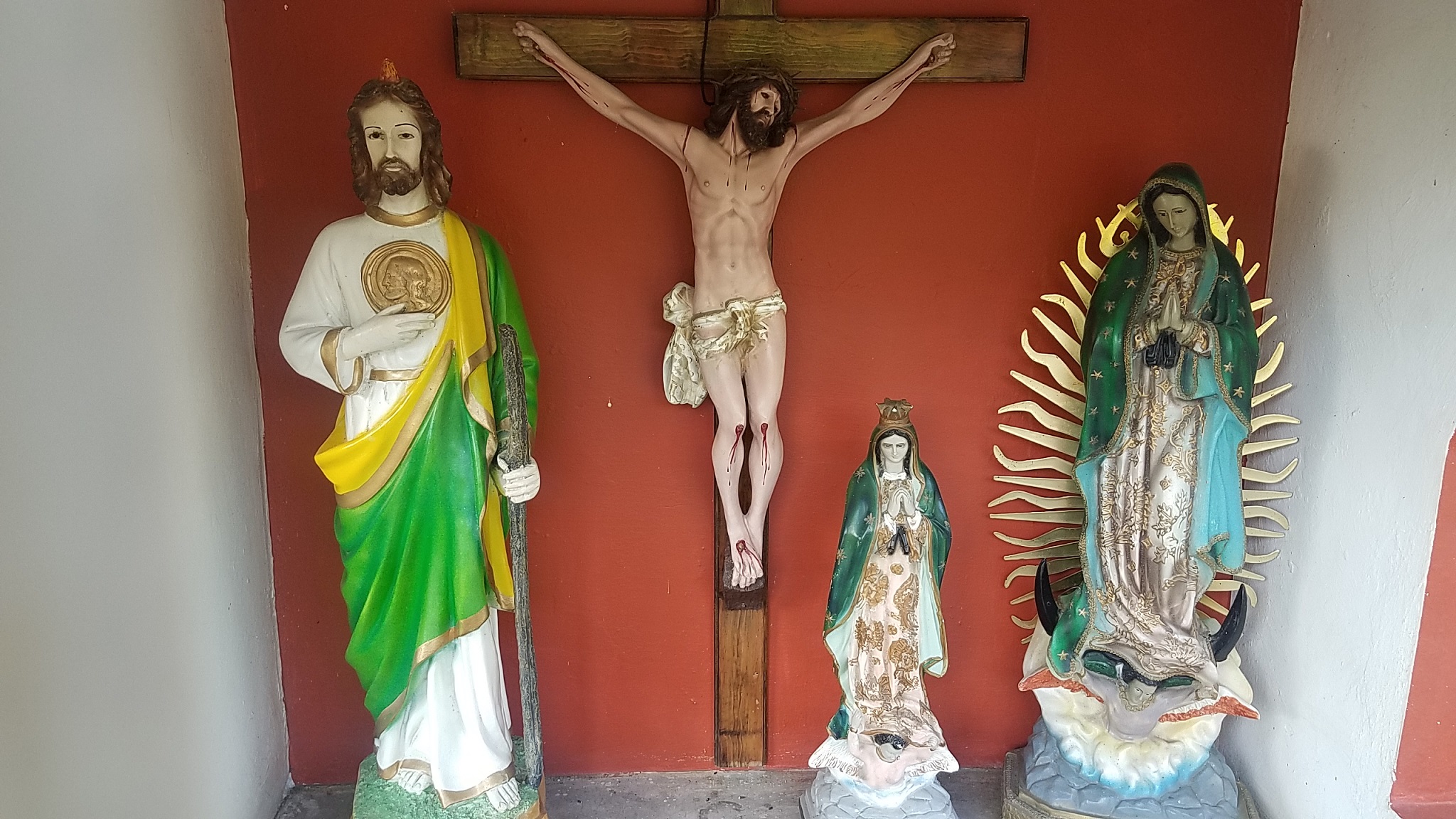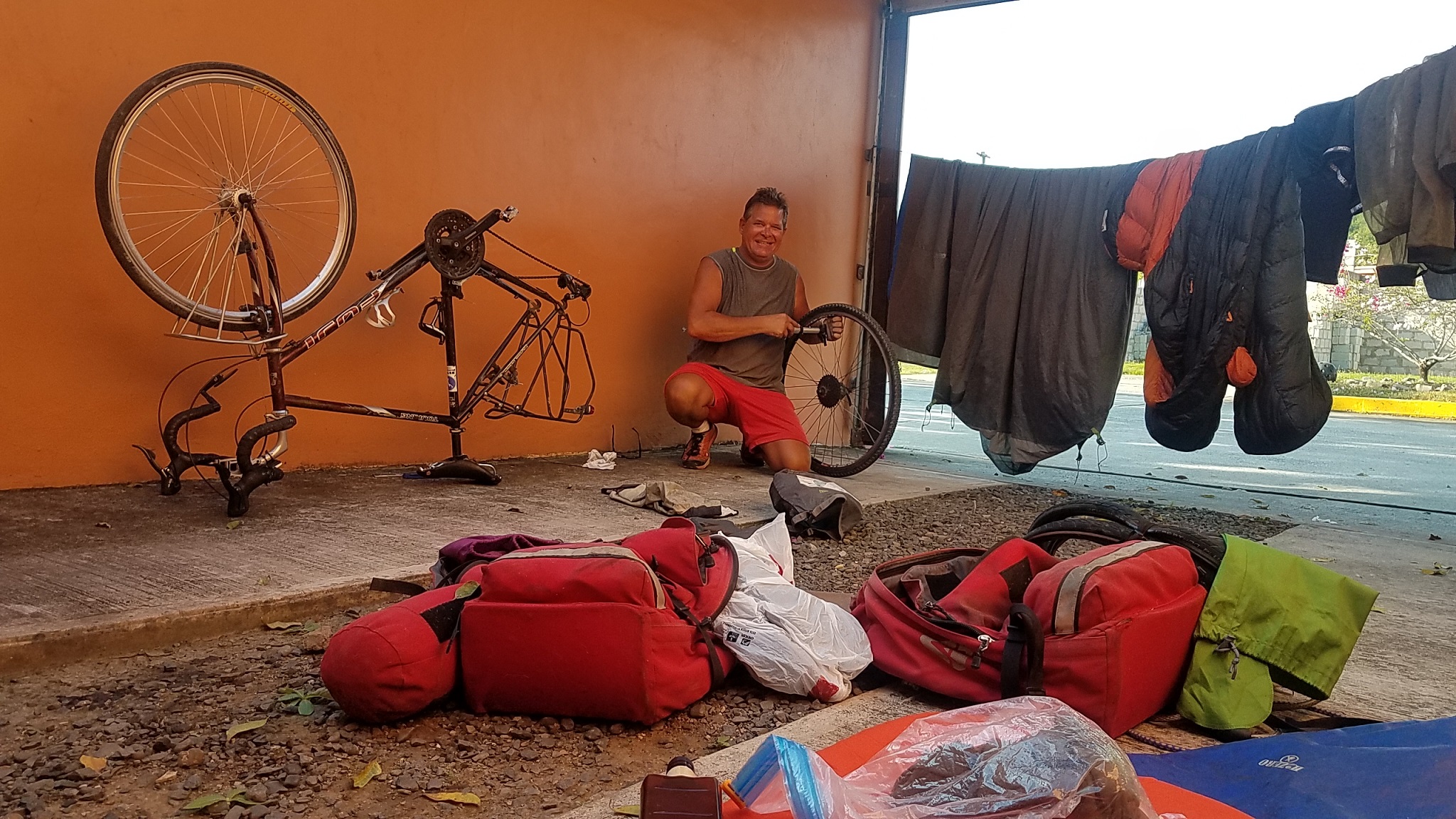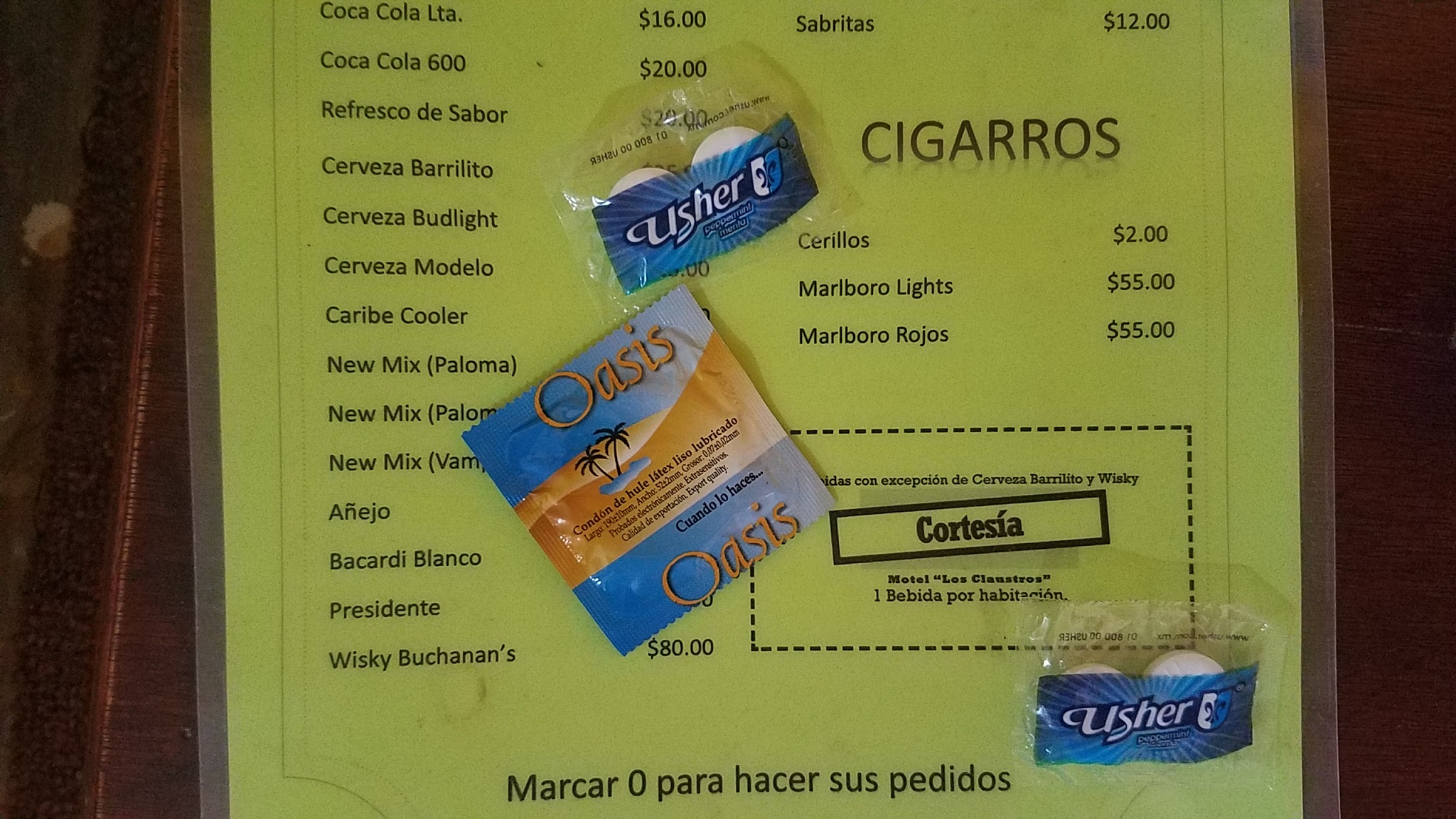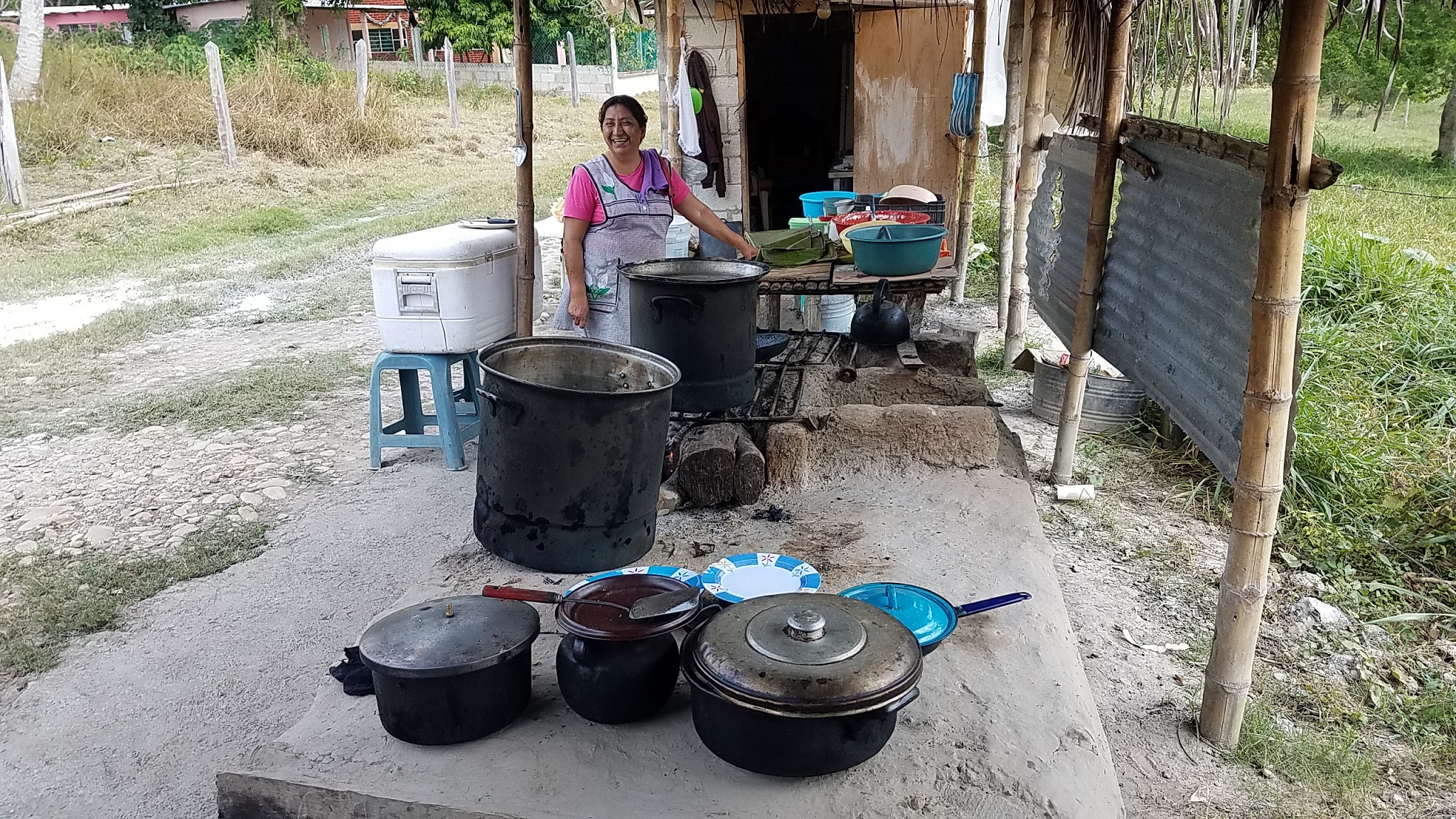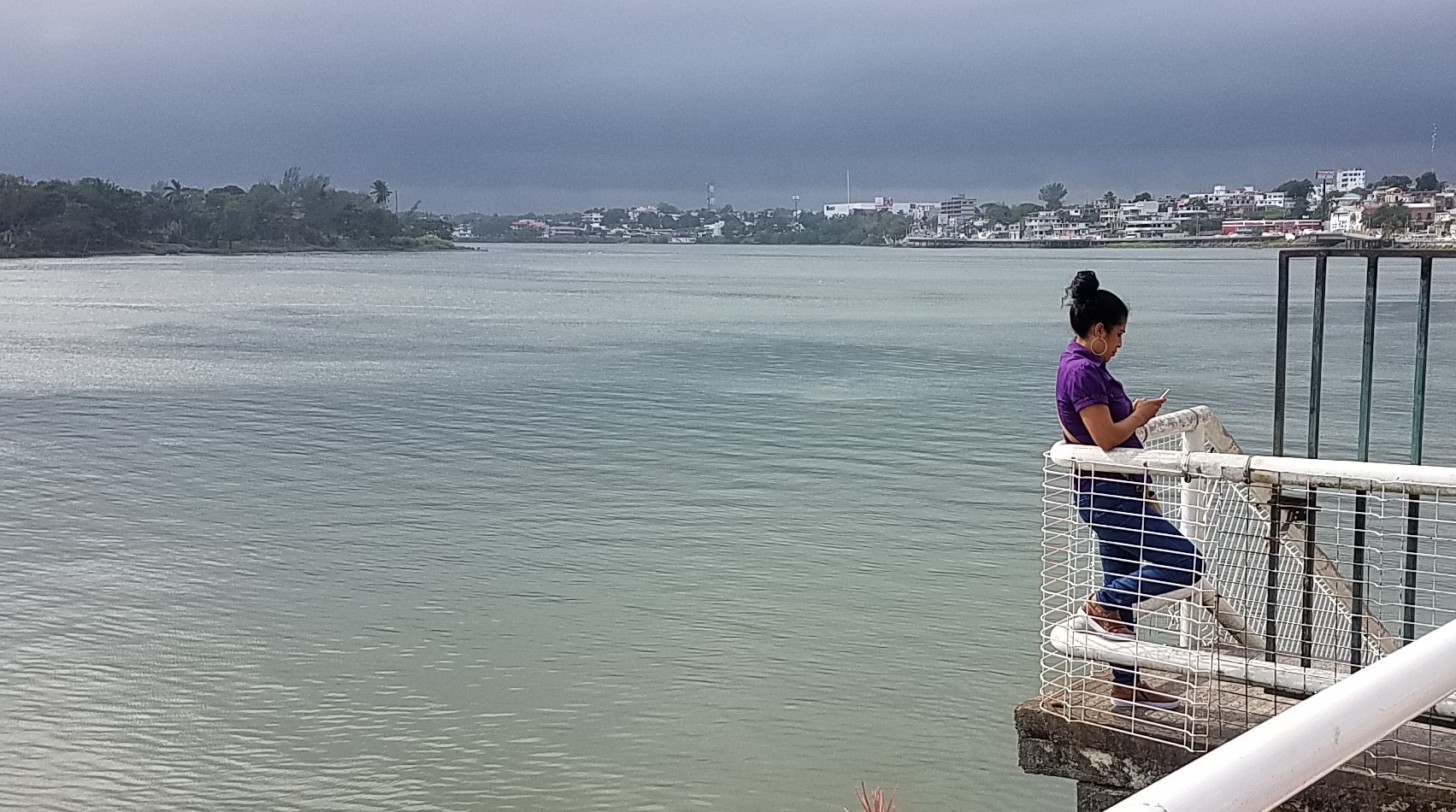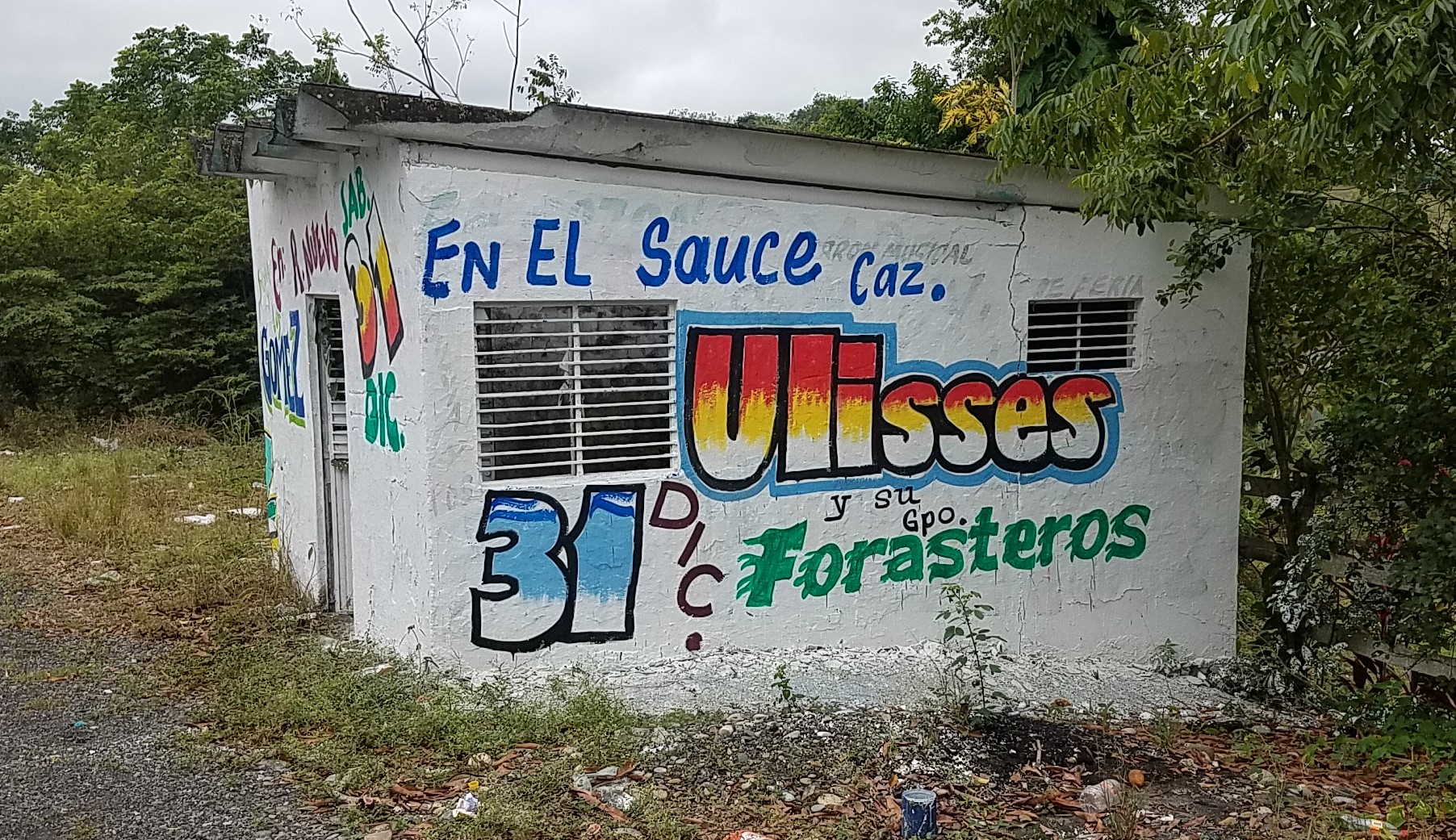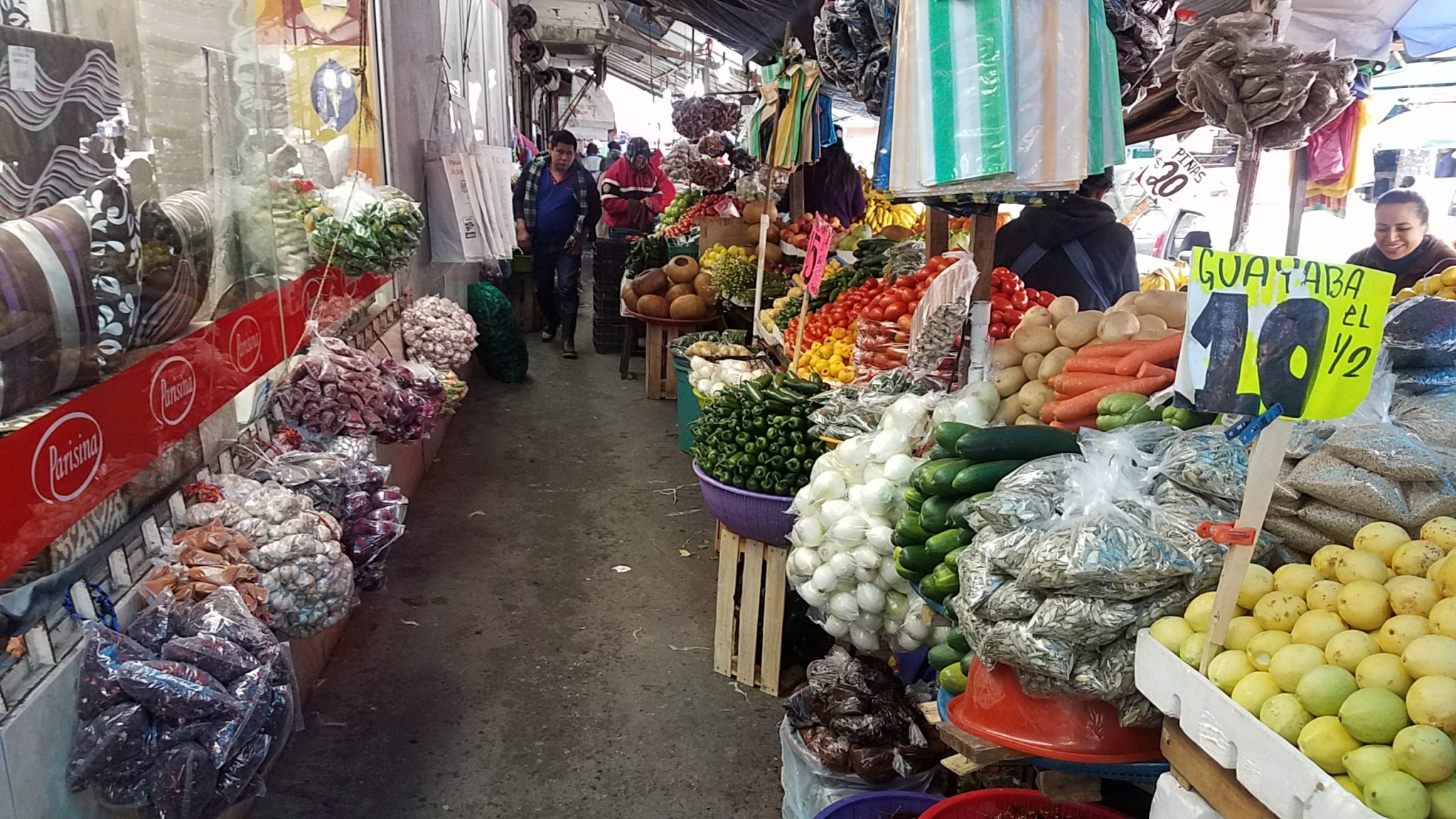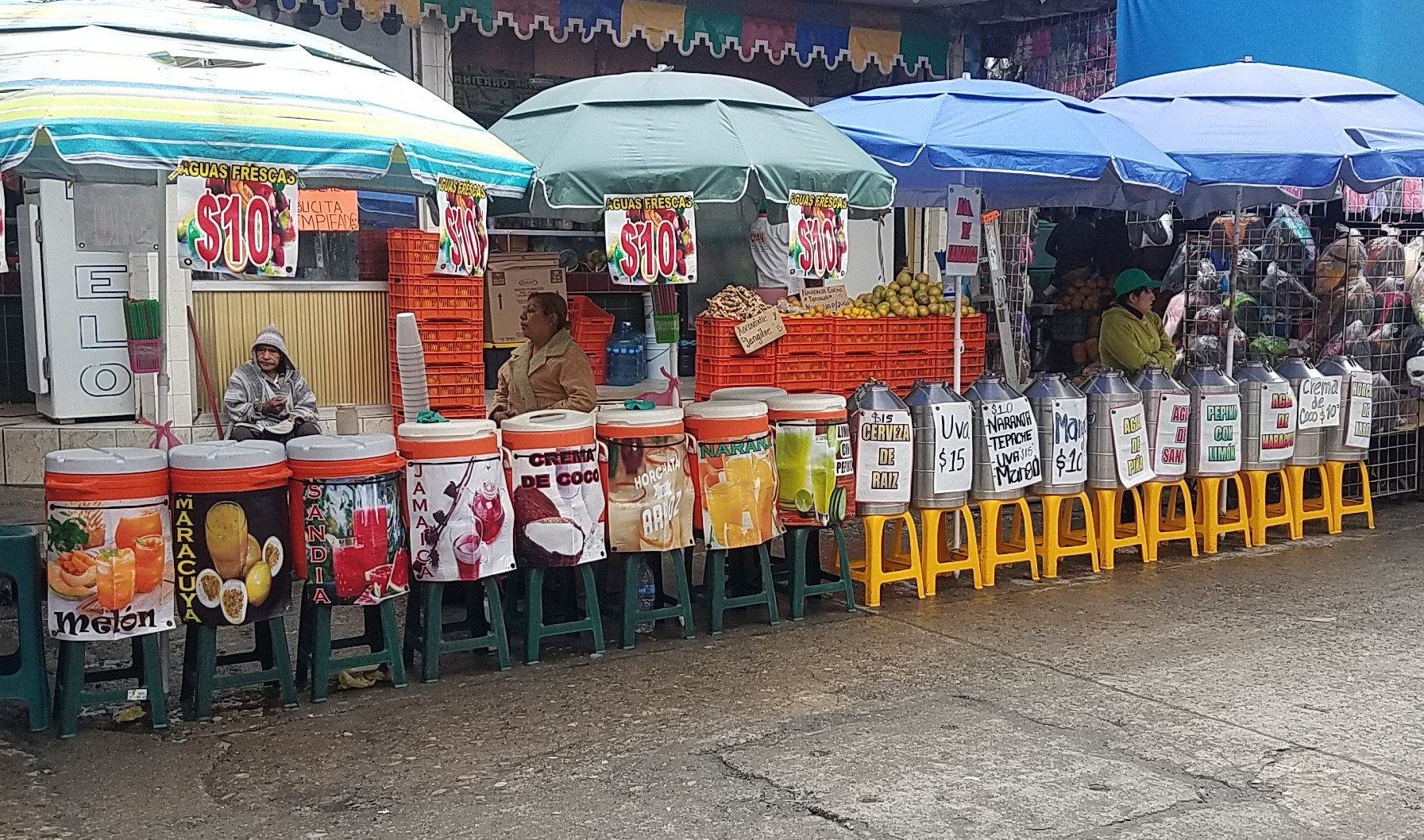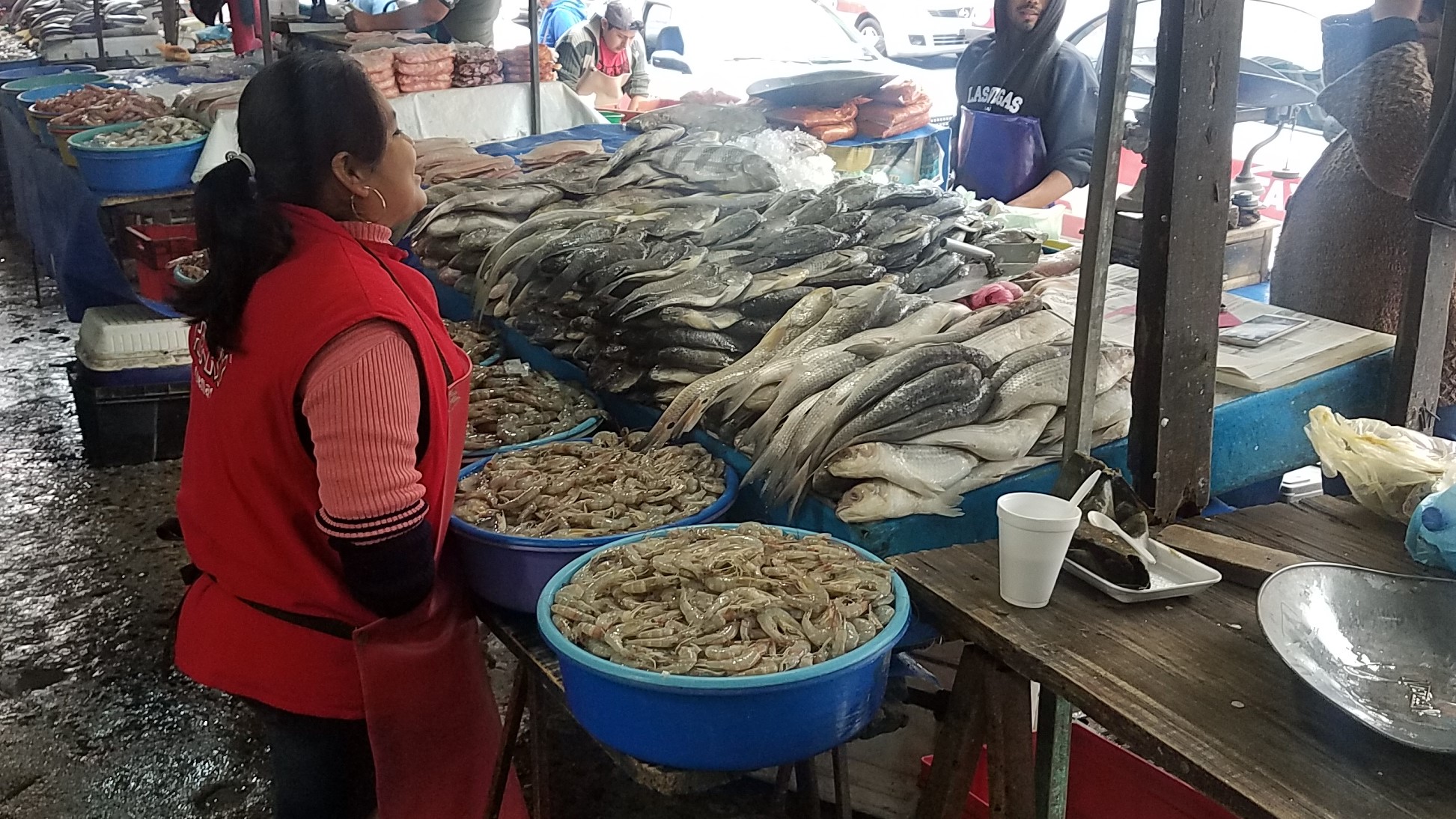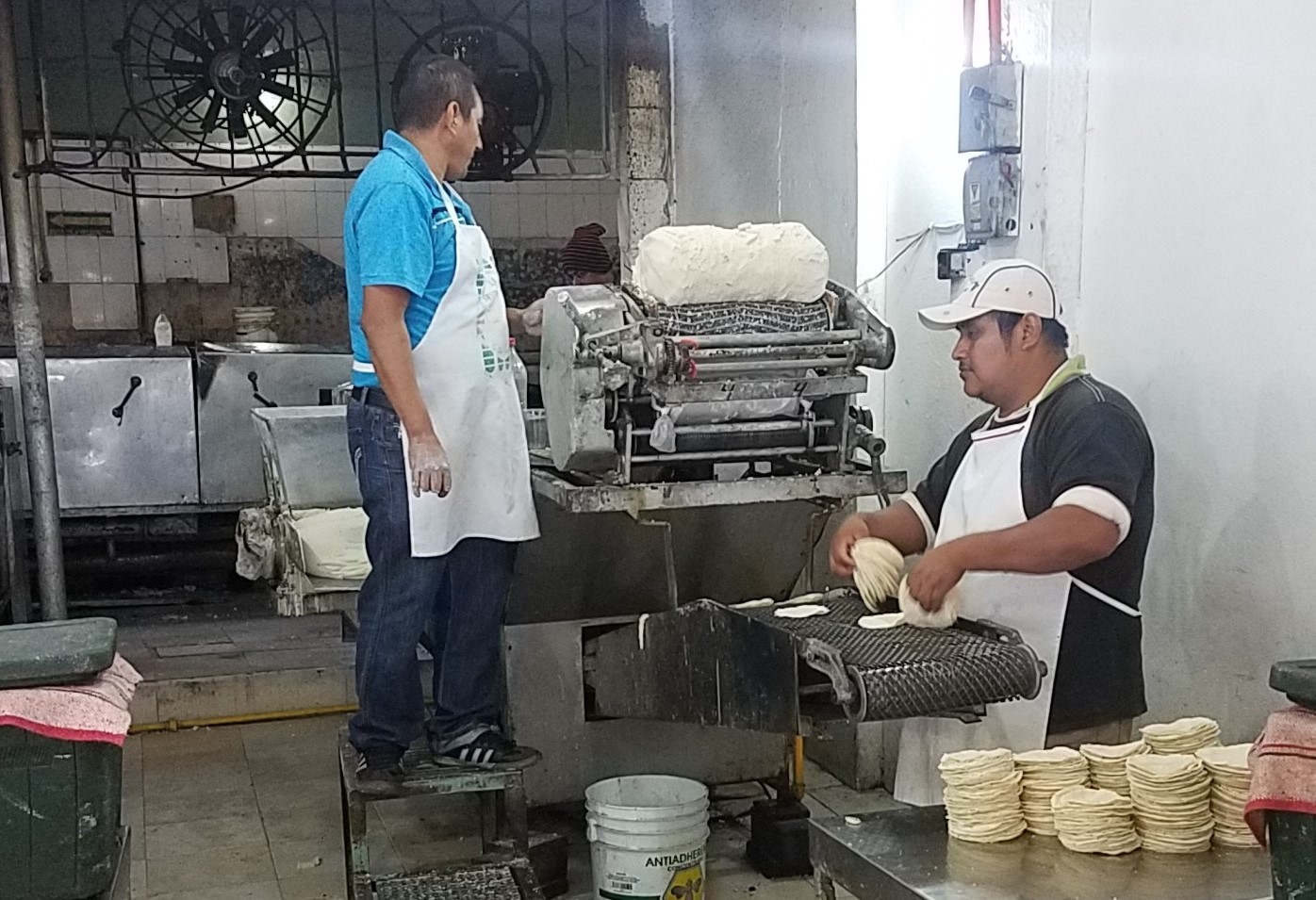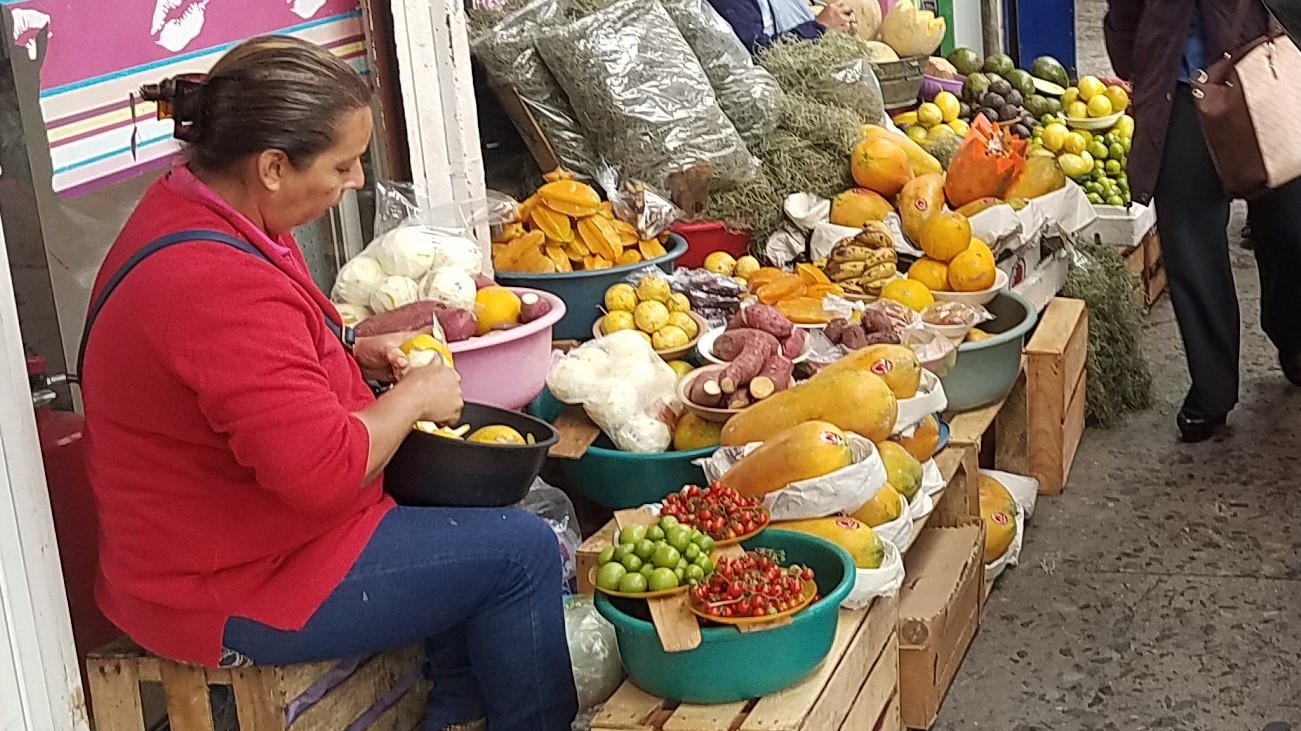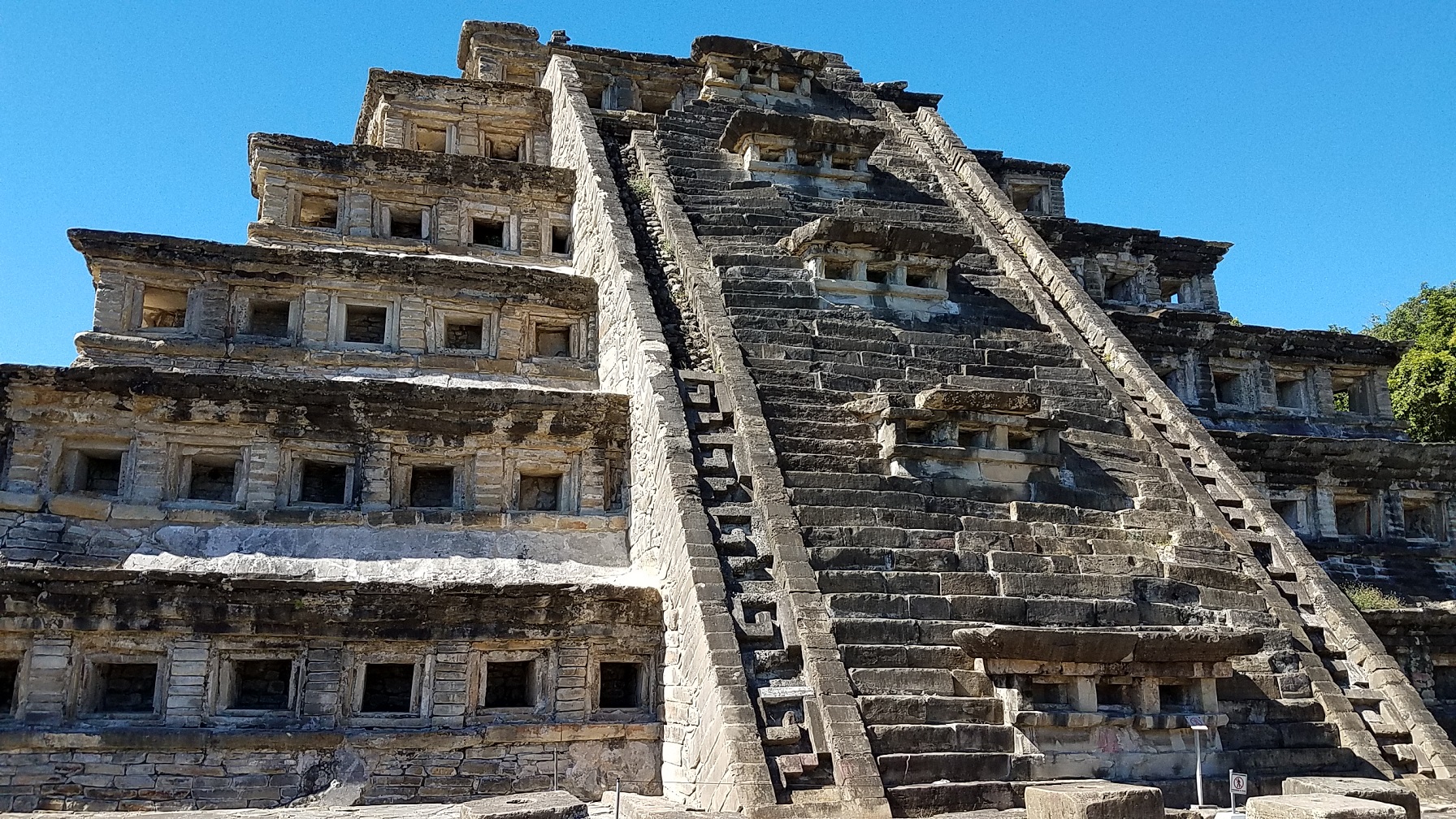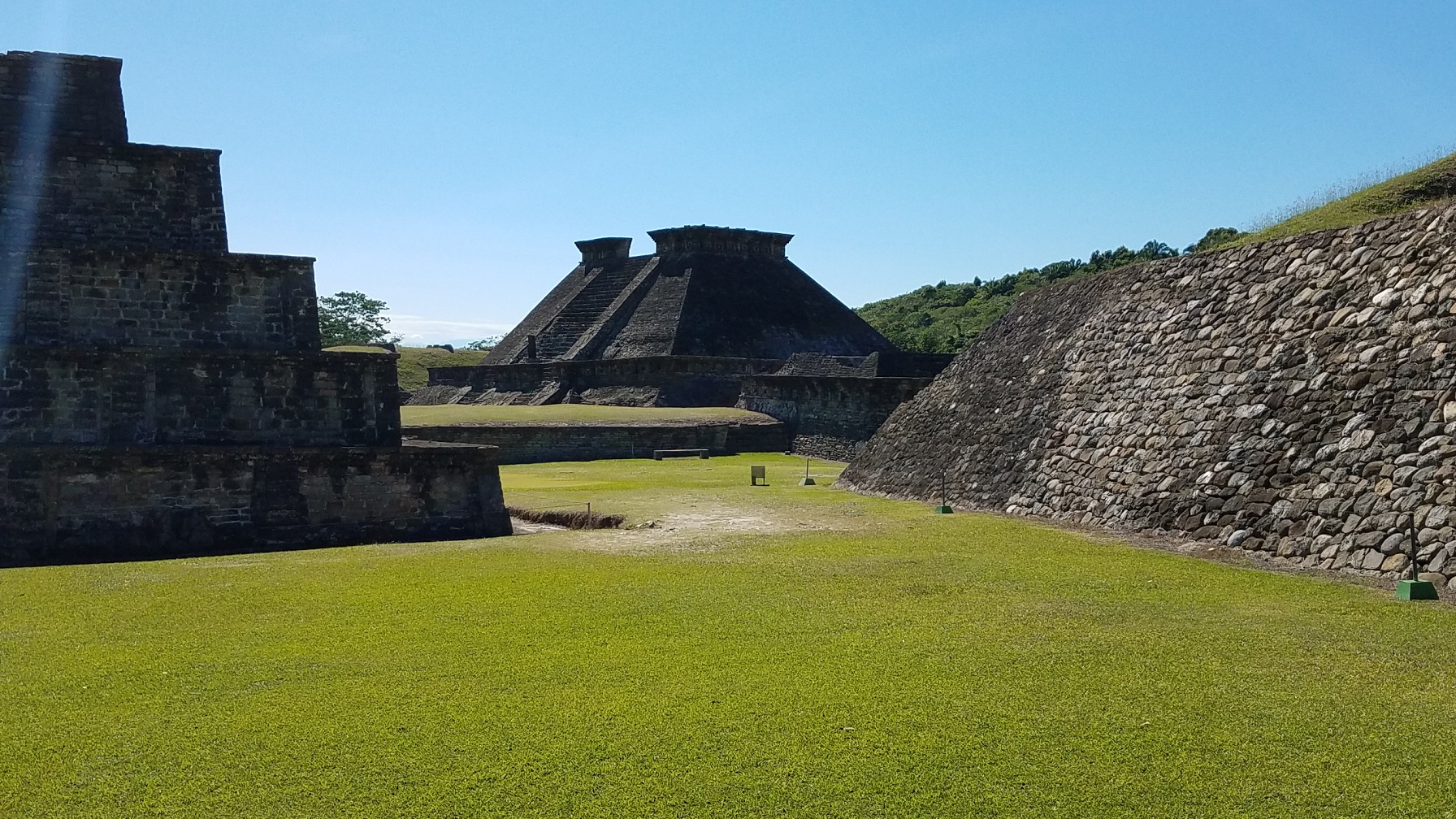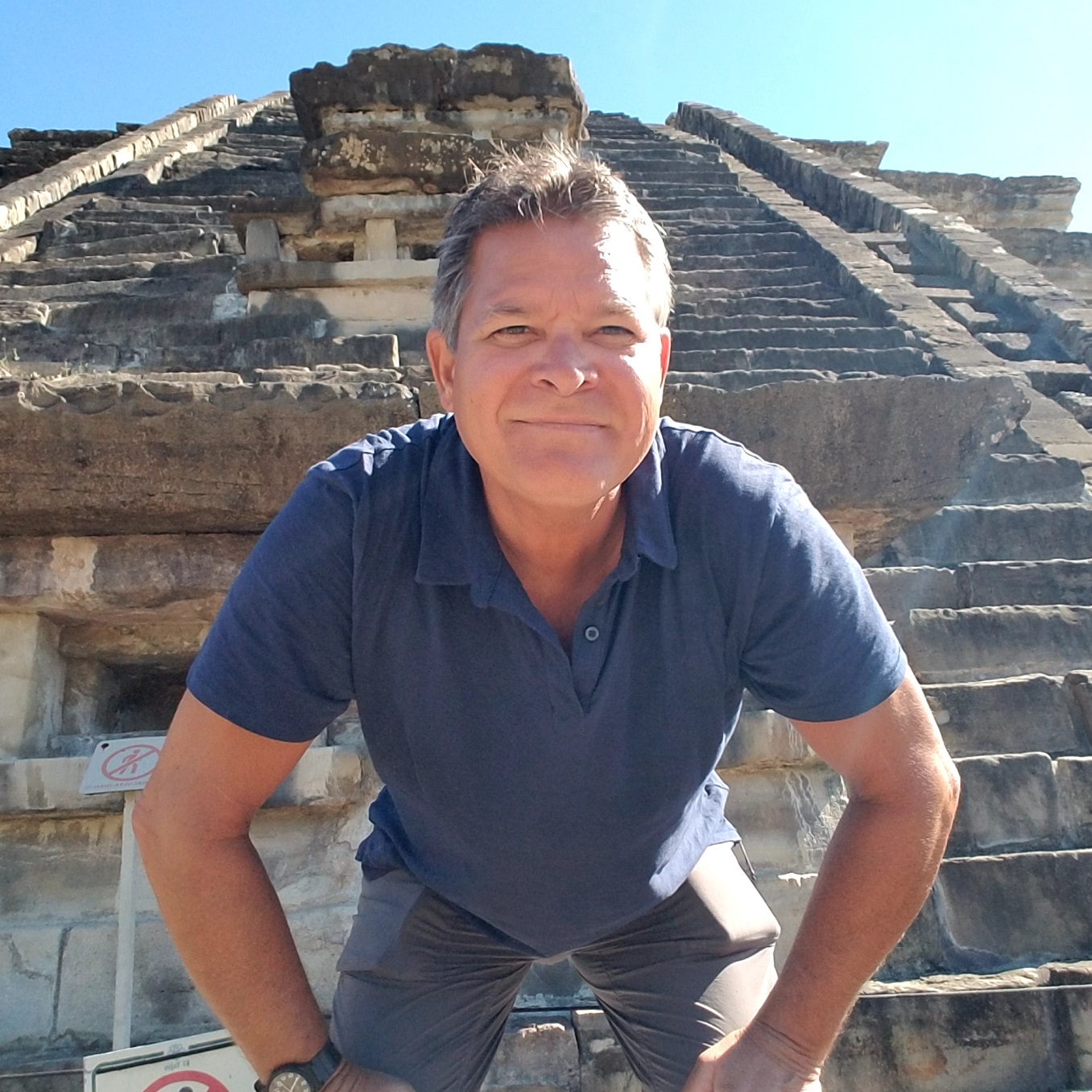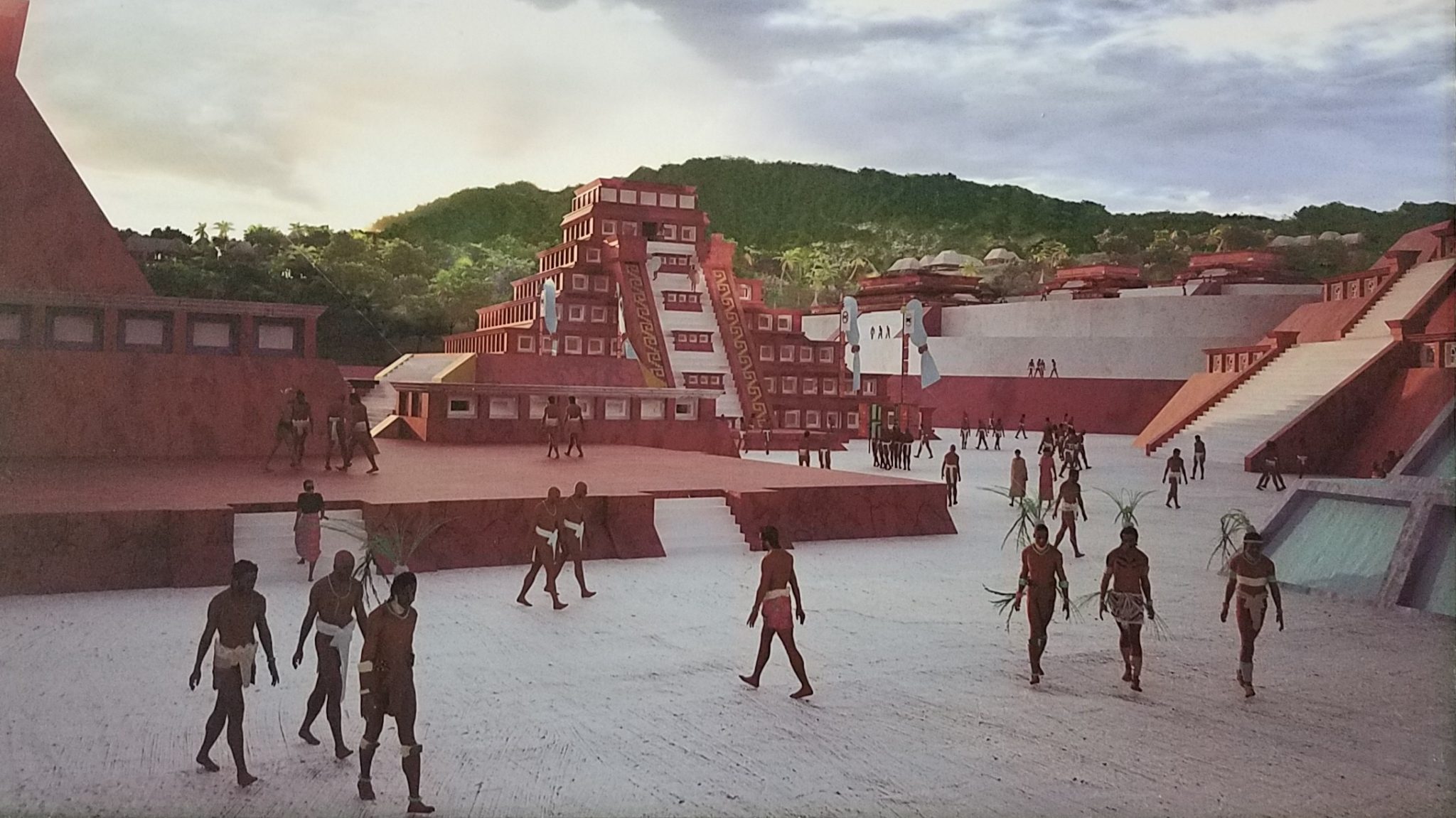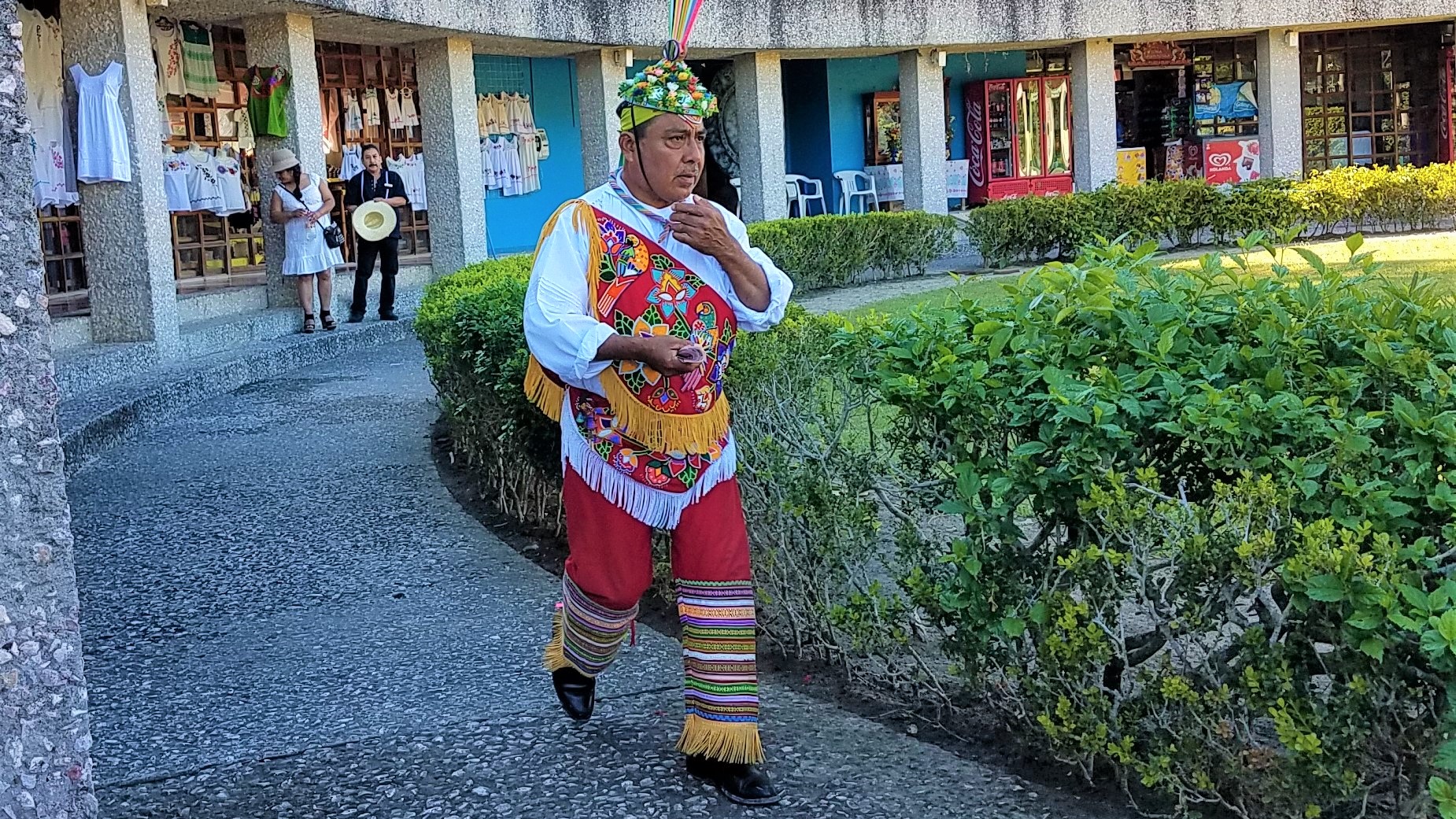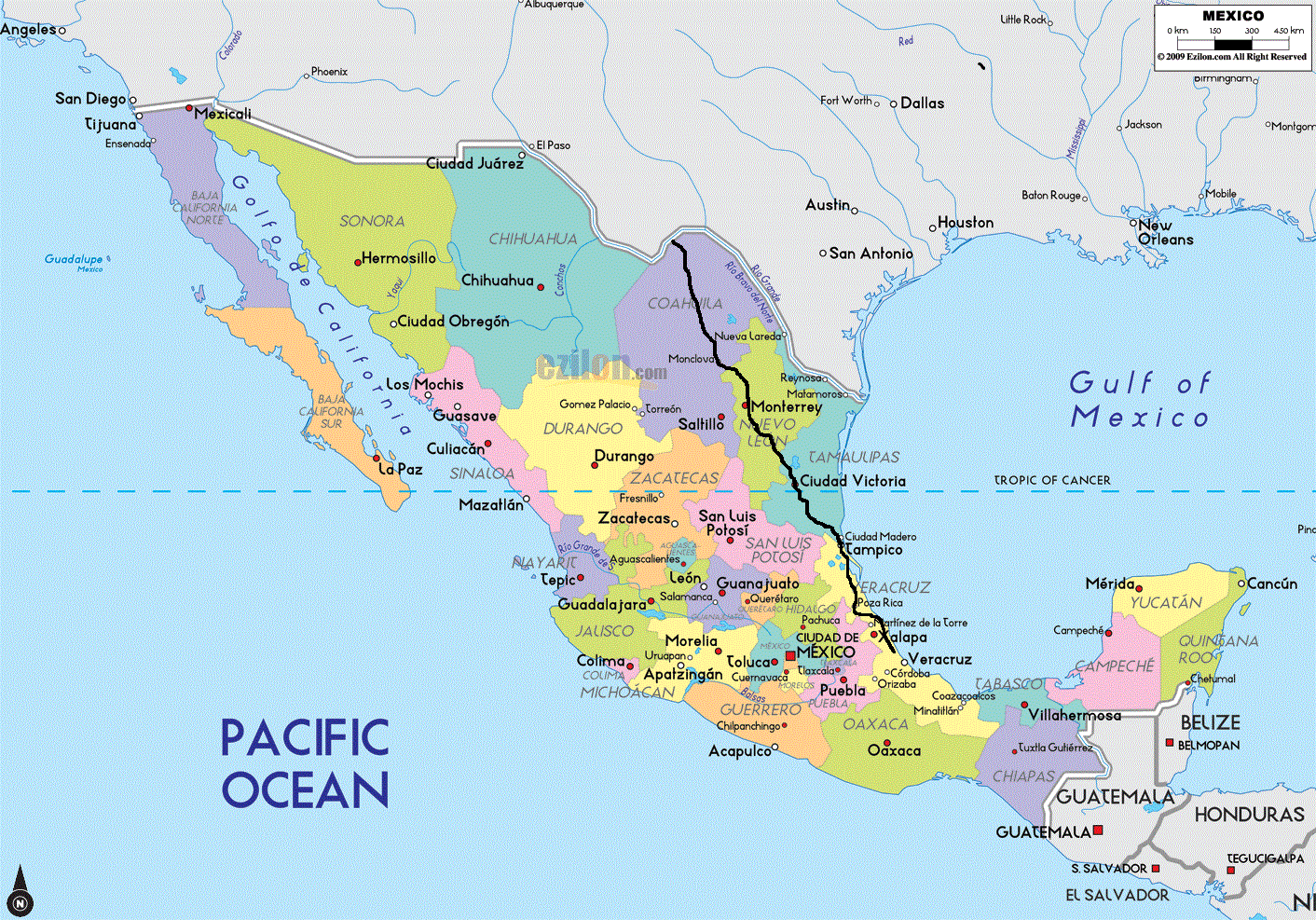Before I forget, below are a couple videos from performance artist Héctor Zamora. I saw these in the Monterrey Museum of Contemporary Art and meant to post them but it slipped my mind until now.
This first one is called Ruptura. I tried to explain it but just gave up and searched the internet for someone else’s interpretation:
In Ruptura, 150 people dressed in black lean on the banister of the Centro Cultural Bancodo Brasil in absolute silence. They carry a book, also black, from which they start tearing off pages one by one, to then let them fall into the free space. The sound of the pages being torn invades the hall. Later on, the books, with their pages carelessly recovered and put back into them, are left on a table, as if waiting for something to happen, while the sound of the ‘rupture’ lingers in the free space as an almost tangible vivid memory. The performance/sound piece idealized by Zamora for the CCBB remains programmatically open, without leading to only one way of interpreting it. On one hand, it summarizes in a clear way the Zeitgeist, the spirit of our times, as it generates an intangible and elusive sensation of dissatisfaction and oppression akin to what many of us feel while reflecting upon the world we live in. On the other, the rupture carries a utopic message of catharsis and liberation. The bravery needed to tear off the pages is the one that can save us. Through these ripped books, the artist seems to say that we will be able to start again, or, paraphrasing T.S. Eliot: these fragments we will shore against our ruins.
This next one is called The Abuse of History, in which 20 people throw 300 potted tropical plants out the windows of a colonial mansion to shatter and accumulate on the ground below. I’m sure it means something, but I’ll be darned if I know what it is.
Back on the road, I left Tampico and got on some pretty quiet paved country roads for awhile. It was nice to get off the highway and ride through quiet countryside again. Lots of cattle, ranches and pastures, as well as quaint little villages. The locals get a kick out of my overloaded bike. I get lots of horn honks, whistles, shout outs and stares as usual.
It was very hot and humid for a few days but then suddenly cooled off by about 40 deg. so it went from 90 to 50 overnight. Also had a couple days of drizzle which slowed me down a bit.
Here is a shot of my bike on this bridge which separates Tamaulipas and Veracruz. It was a difficult crossing because of the narrow walkway.
Once in Veracruz I started seeing a lot of these little chapels by the roadside. They aren’t memorials or shrines to people but it looks like they are just places where you can stop and say a prayer–perhaps praying that you won’t get killed on the highway by some idiot driver.
I broke a spoke one day and had camped out the night before so after a long hot day I struggled into the town of Naranjos where I got the first motel I came across. But in Mexico “motel” means an hourly hotel where you just go for a quicky with your sweetheart.
I was kind of disgusted but too tired to go looking for another hotel so I checked it out and it was large and clean so I took it. The prices are $9 for 2 hours, $12 for 4 hours and $2.50 for each additional hour. All I can say is, if you need more than 4 hours, congratulations. Ah, to be young again.
The rooms have their own private garage so you can pull in, close the door and have compete privacy. For me it was a great spot to replace my broken spoke, dry out my tent and sleeping bag and perform other maintenance.
In the room they supplied a complimentary condom and a couple breath mints. How nice!
The only real problem was the TV only showed X rated porn videos (no photo).
One of the great things about traveling the back roads is you get to see a lot of small roadside eating places. This is one place I stopped at and had crab empanadas and a tamale. It was cheap and delicious.
I stayed a couple days in Túxpan. Here is a woman on her phone by the Túxpan river.
I’m starting to see many advertisements for New Year’s Eve parties just painted on random walls and buildings. In this one, Ulisses and his group the Forasteros (the Outsiders) are performing in Cazones at a place called El Sauce.
I stopped in the town of Poza Rica (It means rich well–due to the many oil wells in the area.) and wandered through the market. There are few supermarkets here as we know them in the US. Most people buy their food from specialty stores. So if you want meat you go to a carnicería, if you want fruit you go to a frutería, and so on. But at the market you can get anything, right on the street—meat, fish, vegetables, fruit, bread, clothes, books…it’s all there. It is a chaotic place. Thousands of people bustling through impossibly narrow sidewalks. Vendors shouting and cajoling, people haggling over prices, the smell of meat grilling and tortillas cooking…. It’s a sensory overload. Here are a few pics.
Not much room to squeeze through, especially if you are on a bicycle!
Whatever kind of juice you like, they have it.
Fresh fish and shrimp. Wish I had a kitchen.
Making tortillas. I guess you know they are fresh.
Woman by her fruit stand. Papayas and a bunch of other stuff.
Selling pineapples on the street.
But I started thinking…all these are cash transactions. How does the government monitor and collect taxes? In the US there are strict rules about sales taxes and reporting income. But here they don’t charge sales tax. How do they report income? Is all this part of the unreported underground economy?
Well I did some research and if you are interested read on.
A “normal” economy is where business is done (products and services are sold) all in the plain sight of the government, and the corresponding taxes for the transaction are paid. Businesses have licenses and are legally registered with the government so that their income can be taxed as it is with all workers.
In Mexico six in 10 workers, or 30 million people, live in the informal “shadow” economy, This is their full-time “day job”, and they pay no VAT or income taxes to the government for their labors, they neither pay social security, FICA, nor anything similar to that to the government, and they do not report their income in any way to the government. It is estimated the country loses 3 or 4 percentage points of GDP every year because these workers don’t generate any taxes. Since their income is invisible to the government and they haven’t paid into the system, they also are not eligible for social security benefits. So a large percentage of the population live a basic, hand to mouth existence, with no safety net or means of supporting themselves when they are older.
What’s the solution to this problem? I’m not sure, but in one experiment a guy named Hernando de Soto, a Peruvian economist, wanted to understand why it was so hard to start a legal business in Peru. So he tried to set up a little business, a small shirt factory, entirely inside the system. He hired a lawyer and a few students and told them to go out and do everything they had to do to make this a fully legal factory and figure out how long it takes.
It took a lot. They had to get 11 different permits from seven different ministries. They were asked for bribes 10 times, and had to actually pay bribes twice. There were lots of delays and in total it took 289 days working six hours a day to set up the business— a small factory. The cost was $1231, thirty-one times the monthly minimum wage.
For most people, this is just not feasible, so they open an illegal factory. But without legal documents you cannot get a bank account, you cannot raise capital or get credit, you cannot get loans, and all this make it difficult to expand and grow your business.
So one simple thing governments can do is to reduce the bureaucracy and regulations needed to open a legal business. Any small business owner knows how too much regulation forces you to cut corners and go outside the law. I had a retail space once and wanted to put up a sign on the building. But I needed a permit from the city. It turned out that the permit to get the sign cost more than the sign itself! I said screw it, and put up the sign with no permit. Nothing happened but if a city inspector came by and asked to see my permit I would have gotten busted and probably would have had to pay a fine (or a bribe).
De Soto continues to travel the world pointing out ridiculous bureaucracies. In Egypt, it took him 548 days to get the required permits and licenses to open a legal bakery. In Tanzania It took 379 days to start up a legal business at a cost of $5,506.
In the USA, it varies by state and type of business, but in Florida you can register a retail business by filling out an online questionnaire in 20 minutes and paying an annual fee of about $135. You may also need to register the business with the city and pay an additional fee but it only takes a few minutes. That’s it.
You can read de Soto’s book The Mystery of Capital here. By the way, for any economists out there, the book was endorsed by Ronald Coase (a Nobel laureate in Economics).
Back on the road, my next stop was the largely indigenous town of Papantla. Near the main plaza was this 150 foot long mural depicting the history of the area. The mural was created by a local artist.
Near Papantla are the ruins of El Tajín, which was one of the largest and most important cities of the Classic era of Mesoamerica. El Tajín flourished from 600 to 1200 C.E. and during this time numerous temples, palaces, ballcourts, and pyramids were built. From the time the city fell, in 1230, to 1785, no European seems to have known of its existence, until a government inspector chanced upon it.
It is unclear who built the city. Some argue in favor of the Totonacs and the Xapaneca; however, there is a significant amount of evidence that the area was populated by the Huastec at the time the settlement was founded in the 1st century CE. The rapid rise of Tajin was due to its strategic position along the old Mesoamerican trade routes. It controlled the flow of commodities, both exports such as vanilla and imports from other locations in what is now Mexico and Central America.
From 600 to 1200 C.E., El Tajín was a prosperous city that eventually controlled much of what is now modern Veracruz state. The city-state was highly centralized with the city itself having more than fifty ethnicities living there. Most of the population lived in the hills surrounding the main city. The religion was based on the movements of the planets, the stars and the Sun and Moon, and with the Mesoamerican ballgame. This led to the building of many pyramids with temples and seventeen ballcourts, more than any other Mesoamerican site.
El Tajín reached its peak around 900-1100 C.E. and prospered until the early years of the 13th century, when it was destroyed by fire, presumably started by an invading force. The city was left to the jungle and remained covered and silent for over 500 years. It was discovered in 1785 by a Spanish official.
Here are a couple photos
Here I am squatting in front of one of the buildings looking smug for some reason.
Here is an artists rendering of what the place would have looked like in its prime.
At the El Tajín site I witnessed the ceremony of the Voladores. This event is a cultural tradition of the Totonac people of Veracruz state. The tradition dates back to ancient times and has been passed down through the generations. The voladores, “fliers”, launch themselves from the top of a pole of up to 150 feet in height, and slowly descend circling the pole. The ritual begins with five men circling a tall pole. One of the men plays music with a flute and a small drum. They then climb the pole and position themselves on a small wooden rotating platform at the top. The man playing the music stands in the center, playing his flute and drum, and does a dance, facing each of the four cardinal directions in turn. This is one of the most tense moments for the audience as he performs his dance standing at the top of a pole without a harness or any protection.
They wrap four lengths of rope around the pole while rotating the platform. When fully wrapped, the platform begins to spin and the four voladores launch themselves off upside down and as the ropes unwind the pole rotates. In their descent, each volador circles the pole 13 times. Thirteen times for each of the four voladores, for a total of 52 rotations, representing the number of years in the Mesoamerican calendar cycle.
According to tradition, there was once a severe drought in the Totonacapan area of Veracruz, and food and water became scarce, so a group of elders met to find a solution. They decided that a ceremony should be performed to ask the gods to return the rain and fertility to the soil. This is considered the origins of the event.
One guy stays below to collect a small donation from the spectators.
Here is a short video of the performance.
Well I think that’s enough for now. I am approaching Veracruz city and am hugging the Gulf coast. I will follow it south until the state of Tobasco before heading west. I decided not to visit the Yucatan peninsula due to lack of time, so I will head west to Chiapas and Oaxaca states before turning back north again.
